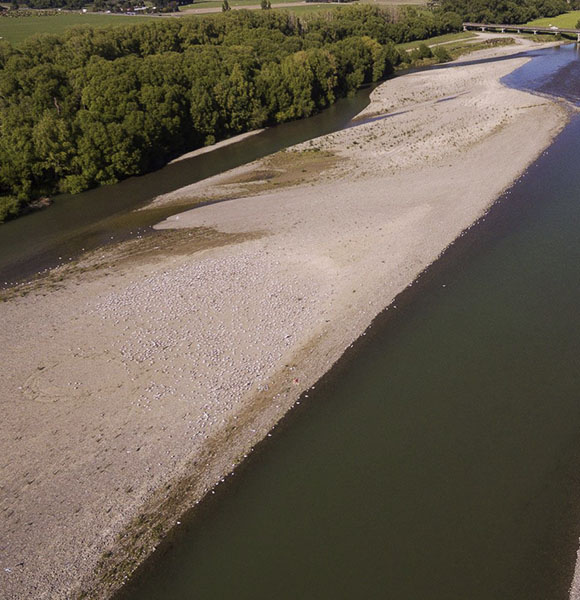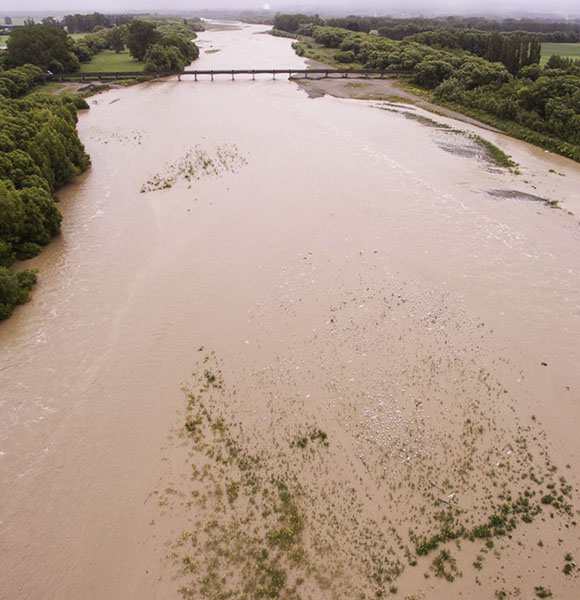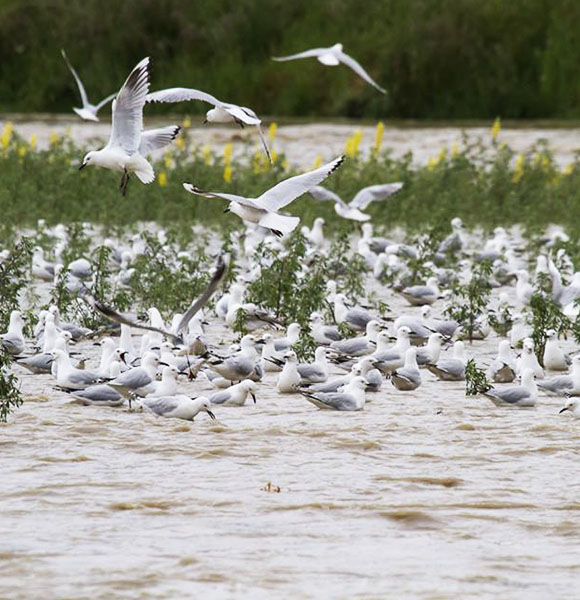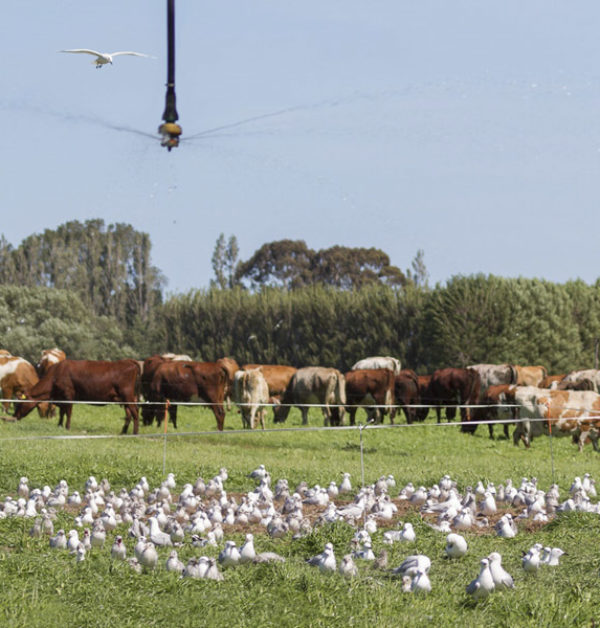Black-billed gull - tarapuka Larus bulleri
Black-billed gull - tarapuka Larus bulleri

Ashley-Rakahuri colony: 15 November 2018
Conservation Status
At Risk: Declining
While several thousand still remain, the population has declined dramatically since 2000 due to habits loss and mammalian predation.
This apparently abrupt decline may be linked in part to their longevity. They can live for up to 40 years, which may have masked the lack of juvenile birds being recruited into the breeding population over several decades. Once older generations died off, with few new breeding birds to take their place, the population began plummeting.
It is now said to be the most threatened gull species in the world.
The majority nest in close colonies in the South Island, primarily Southland, between August-February. They breed at 1 year of age, laying 2-4 eggs in a shallow depression atop a small mound of dry vegetation. The olive-black speckled eggs are incubated for 20-24 days, and chicks fledge (develop wing feathers enabling flight) at 26 days.
They mainly feed on insects and small fish, but often make good use of worms and insects exposed by ploughed up farmlands. After breeding, most birds migrate to the coast.

Ashley-Rakahuri colony: 26 November 2018

Ashley-Rakahuri colony: 26 November 2018
As the images above and to the left show, the birds have adapted to periodic ‘freshes’ when spring rains swell the river, by re-nesting when the water recedes.
In 2016, the river had become so infested with weeds, the birds laid claim to a nearby wet paddock in the swale of what had once been a coastal dune.
Overhead irrigation kept the field wet, mimicking their natural habitat. A good supply of invertebrates in nearby ploughed fields offered a ready supply of food. The farmer was happy for a hot wire be erected around the colony to keep out curious cows, and traps were set along along the paddock fences to catch any potential predators. The result was a remarkably good outcome, with almost all eggs hatching and chicks fledging.
Like the gravel extractors in the riverbed, this was a great example of how the community works together to ensure a positive outcome for the birds.

Conservation Status
At Risk: Declining

Ashley-Rakahuri colony: 15 November 2018
The majority nest in close colonies in the South Island, primarily Southland, between August-February. They breed at 1 year of age, laying 2-4 eggs in a shallow depression atop a small mound of dry vegetation. The olive-black speckled eggs are incubated for 20-24 days, and chicks fledge (develop wing feathers enabling flight) at 26 days.
They mainly feed on insects and small fish, but often make good use of worms and insects exposed by ploughed up farmlands. After breeding, most birds migrate to the coast.

Ashley-Rakahuri colony: 26 November 2018
As the images above and below show, the birds have adapted to periodic ‘freshes’ when spring rains swell the river, by re-nesting when the water recedes.

Ashley-Rakahuri colony: 26 November 2018
In 2016, the river had become so infested with weeds, the birds laid claim to a nearby wet paddock in the swale of what had once been a coastal dune.
Overhead irrigation kept the field wet, mimicking their natural habitat. A good supply of invertebrates in nearby ploughed fields offered a ready supply of food. The farmer was happy for a hot wire be erected around the colony to keep out curious cows, and traps were set along along the paddock fences to catch any potential predators. The result was a remarkably good outcome, with almost all eggs hatching and chicks fledging.
Like the gravel extractors in the riverbed, this was a great example of how the community works together to ensure a positive outcome for the birds.

The video below shows some of the work we have been doing to count bird numbers and create a post-flood baseline of weeds along a stretch of river.

